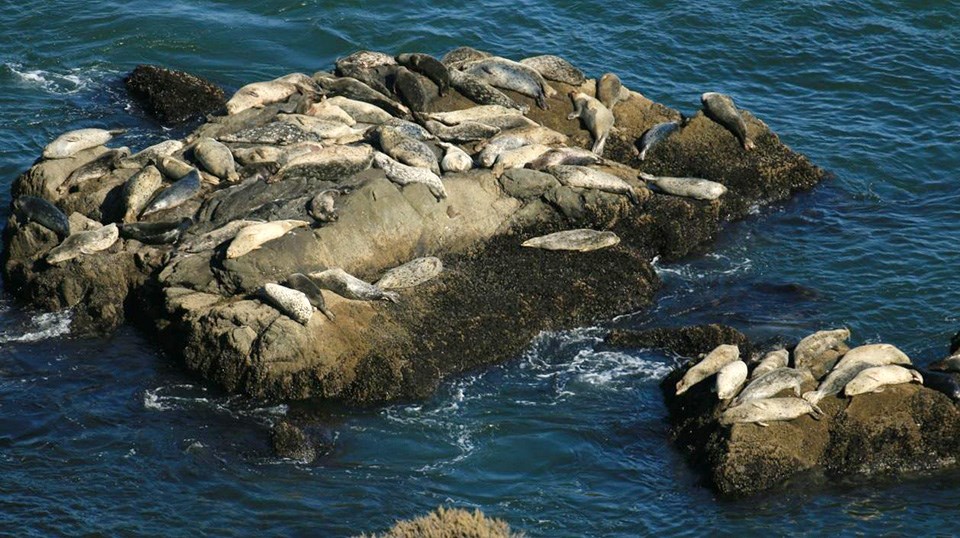Last updated: August 31, 2017
Article
Molting Harbor Seal Counts Show Continued Upward Trend in Bolinas Lagoon

© David Donnenfield
August 2017 - Following the breeding season, harbor seals (Phoca vitulina) of all ages and sexes haul out daily to “molt,” or shed their old fur and grow a new layer. The maximum number of molting seals for all Marin County monitoring sites was approximately 2,630, which is similar to the 17-year average. However, a closer look at the numbers for each individual site shows that most had peak counts that were lower than their respective 17-year averages—except for Bolinas Lagoon and Point Bonita.
While Point Bonita’s maximum count was similar to its 17-year average, Bolinas Lagoon had a maximum count of 770 seals, which is much higher than the average of 490. There has been an increasing trend in the number of molting harbor seals at this site since 2014, and the counts for both the 2017 and 2015 seasons were the highest ever recorded there. The increase may be due in part to seals shifting from Double Point to Bolinas Lagoon, as lower than average counts were recorded at Double Point in 2014 and 2016 (no surveys were conducted in 2017 due to site safety concerns). However, additional years of data are needed to investigate this trend and try to understand why some seals might be leaving Double Point. For more information, check out the 2017 harbor seal monitoring summary, or contact Sarah Codde.
